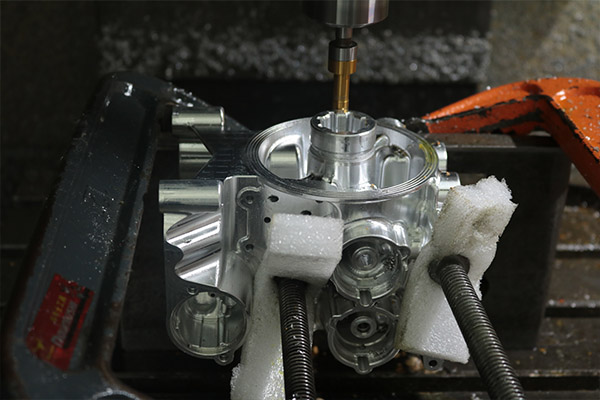Get in touch.
Dear,I will reply in 12 hours. All your message are protected!
Rapid Prototyping Services, Professional manufacturer of CNC Prototyping and 3D Prototyping in China.
CNC (Computer Numerical Control) machining is a versatile manufacturing process that enables precise and efficient fabrication of various components. One crucial technique in CNC machining is chamfering, which involves creating a beveled edge or angle on a workpiece. In this article, we will explore the different methods and best practices for chamfering using CNC technology.

1.Understanding Chamfering:
Chamfering is the process of removing material from the edges of a workpiece to create a specific angle or beveled edge. It serves multiple purposes, including enhancing aesthetics, improving functionality, and reducing the risk of sharp edges. Chamfers can be applied to various materials, such as metal, plastic, or wood, and are commonly used in industries like automotive, aerospace, and furniture manufacturing.
2.Tool Selection:
Choosing the right tools for chamfering is crucial to achieve precise and consistent results. CNC machines offer a range of options, including chamfer mills, countersinks, or specialized chamfering tools. Consider factors such as the desired angle, material hardness, and surface finish when selecting the appropriate tool. Carbide or high-speed steel tools are commonly used for chamfering operations.
3.CAM Programming:
Generate a CAM program using specialized software to define the toolpaths and cutting parameters for chamfering. Specify the dimensions and angles of the desired chamfers, taking into account the workpiece's shape and material. Optimize the program to ensure efficient and accurate removal of material during the chamfering process.
4.CNC Machine Setup:
Prepare the CNC machine for chamfering by installing the selected tool and securing the workpiece. Ensure proper alignment and zeroing of the machine's axes to achieve precise tool movements. Use suitable workholding devices, such as vices or clamps, to secure the workpiece firmly and prevent vibrations during the machining process.
5.Machining Process:
Execute the CNC program to start the chamfering process. The machine will automatically follow the programmed toolpaths to remove material and create the desired chamfer. Monitor the process closely to ensure proper chip evacuation, cooling, and adherence to cutting parameters. Adjust the feed rates and spindle speeds as needed to achieve the desired chamfer dimensions and surface finish.
6.Quality Control:
Regularly inspect the chamfered edges to ensure accuracy and quality. Use precision measuring instruments, such as calipers or gauges, to verify the dimensions and angles of the chamfers. Implement stringent quality control measures to identify and correct any issues during the machining process, such as uneven or incomplete chamfers.
7.Post-Machining Operations:
After chamfering, it is essential to remove any burrs or sharp edges left behind. Use deburring tools or techniques to achieve a smooth and clean chamfered edge. Additionally, consider applying surface treatments or coatings to enhance the appearance and durability of the chamfered surfaces.
© 2005-2025 Shenzhen Tuowei Model Technologies Co., Ltd. | All Rights Reserved 粤ICP备11096697号